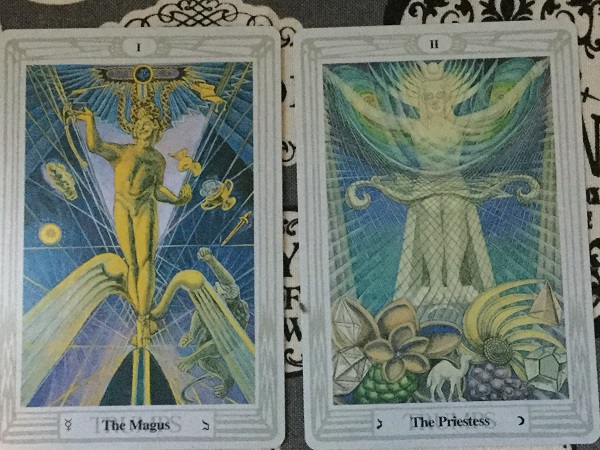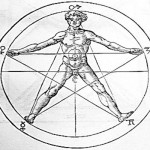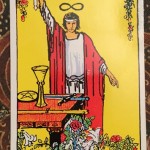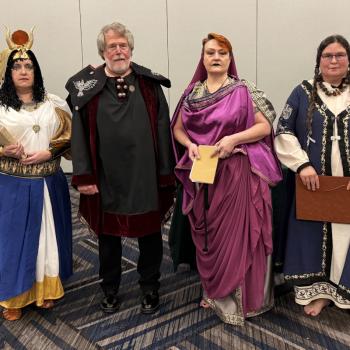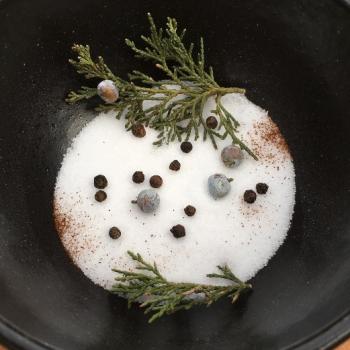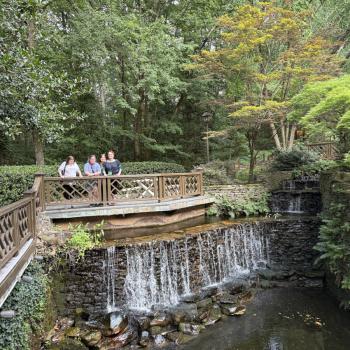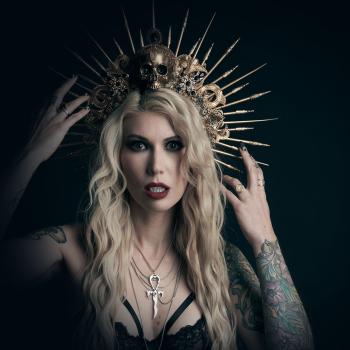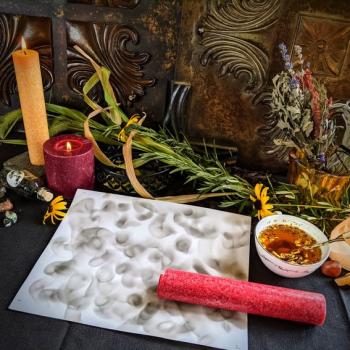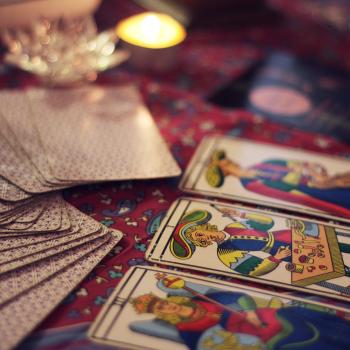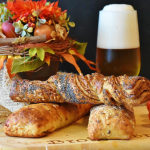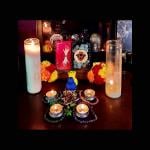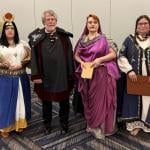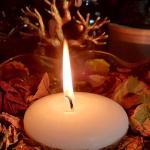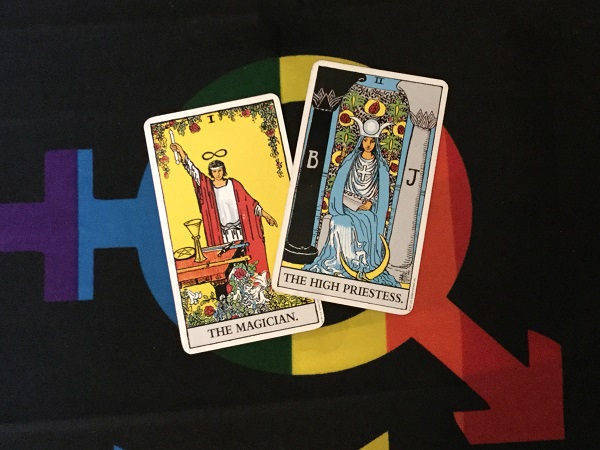
The modern division of magic into dualities of high and low, ceremonial and practical, intellectual and emotional, have shaped the development of modern witchcraft and occultism from their beginnings. Today with mainstream gender roles being challenged in society, and greater tolerance towards various gender identities we are witnessing a new synthesis of masculine and feminine energies. Within modern paganism and witchcraft there are numerous masculine and feminine archetypes of priest and priestess, within Wiccan traditions, and the general archetypes of magician and witch. These divisions are a modern categorization both with distinct symbolism, characterized by masculine and feminine energies; both serve different purposes within ritual, and each works magic differently.
Much of the symbolic language of modern witchcraft and occultism comes from the Hermetic Principles perpetuated by traditions such as the Hermetic Order of the Golden Dawn, and its offshoots. The esoteric schools of thought of the 18th and 19th centuries helped shape the foundation of the Modern Witchcraft Revival, including British Traditional Wicca.
When looking at the symbolism of the occult traditions that influenced Western magical practice, we can turn to the imagery of the Tarot. As we peel back the layers of symbolism one finds a neatly packaged cosmology that serves as a visual roadmap to understanding these esoteric concepts. The most popular and well-known Tarot deck in Western occultism is the infamous Rider-Waite Tarot, published in 1910. The illustrations were done by artist Pamela Coleman Smith under the instruction of A.E. Waite, who advised her on the use of occult symbols; much of which were influenced by the work of occultist Eliphas Levi. Levi is considered one of the founders of the twentieth-century magic revival, and had a profound impact on western magic.
The Rider-Waite Tarot is a classic tool of Western magic and occultism. It is an indispensable resource when it comes to the symbolic language of Western Occultism. It reflects a kind of collective consciousness of the Western magical traditions and the symbolic connections within such traditions. Not only does each card in the Major Arcana represent an archetype; the detailed imagery on each card is also packed with symbolic correspondences represented in minute details seen in the artwork. Even the Minor Arcana is layered in the symbolic language of elemental, numerological, and astrological correspondences.
The Major Arcana cards tell the story of the journey of the Fool, by reading into the story that each card continues from a different stage in the journey we are able to understand our own journey. Each Major Arcana card depicts a specific archetypal energy that we as humans can relate to as points of reflection on that journey. I will be looking at the basic symbolism of two cards, The Magician and The High-Priestess, as a representation of the dichotomy in magical practice between the more ceremonial forms of ritual magic and the primal-intuitive magic of the natural world. Through these archetypes and their images we can better understand the similarities and differences between these two counterparts, and thereby understand the interplay between both forms of magic.
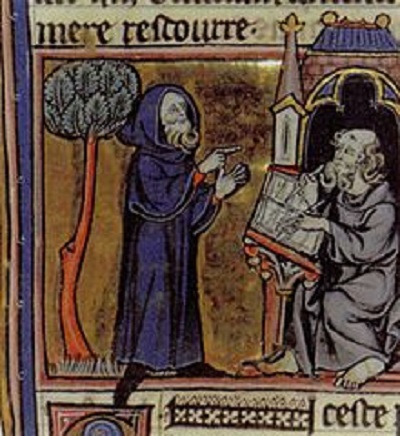
Magical practice shares the same ancient shamanic roots, and the distinction between the two types of magic arose early on in the ancient state-level societies of Greece and Rome. The rituals and ceremonies of the elite priesthood were to benefit the entire community through divine propitiation. The folklore and magic of the common folk was often demonized, and would eventually be transformed into the malefic witchcraft that was allegedly practiced by the country folk living outside the city walls. This began the distinction between High Magic, theurgy, and Low Magic, thaumaturgy. This distinction is seen in the modern archetypes of witch and magician. The magician, representing intellectual pursuits, and the witch being part of nature represents the wild side of magic.
During periods of persecution, those on a more intellectual path were able to hide within the upper levels of society, while those on the more primal paths had to try blending in with the peasantry. The main distinguishing characteristic between both types of magic is whether it is of an intellectual pursuit or one that is more intuitive and emotional.
For example, the category of High Magic is viewed as more ritualistic and ceremonial in nature. Its aim is knowledge and connection with the divine entities for spiritual growth. Ceremonial magic is often accompanied by intense academic study as rituals are known for their precision and complexity. The study of medieval grimoires translated from their original languages make up a large portion of the studies of the ceremonial mage. High magic is often though to have a more religious or spiritual tone. Because of its intellectual nature ceremonial magic is the realm of the magician and the masculine principles of mind and logic.
When looking at the Magician card in the Tarot, the most evident symbols of his ceremonial practice are the Tools of Arte laid out before him. These are the traditional tools of the ceremonial magician that represent his mastery over the four elements of nature, and his connection to them.
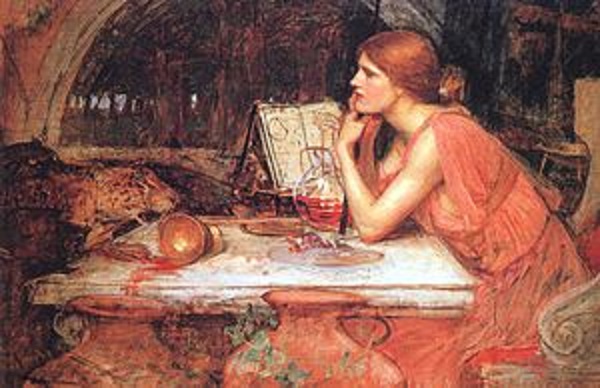
The Witch, in mythology is known for her supernatural gifts, her inhuman nature, and intimate connection to the natural world. It is this primal connection that sets her apart from the Magician, represented in the Tarot by his counterpart the High Priestess. The magician, according to his archetype gains his power through knowledge, study, and spirit contracts. While the power of the witch is inherent in her connection to nature, and the otherworld. In the Rider-Waite Tarot, the High Priestess and the Magician sit next to one another indicating their close association. The witch and high priestess represent the same hidden mysteries and internal source of power. Unlike the magician, she has no tools before her, the equal armed cross over her heart represents her connection to the Earth and the four elements within her. The crescent moon at her feet represents the occult knowledge of the subconscious and chthonic realms. The High Priestess sits at the gateway to the Underworld where the mysteries reside, represented by the pomegranates growing in the garden behind her. Her horned diadem is also an ancient symbol of arcane knowledge; the scroll of the Magician in hand shows that she too uses knowledge to support intuition, just as the Magician must be in tune with nature.
The Witch and the Magician both move energy from one realm to another; their differences lie in their inherent magical nature. A magician was thought to be a human practitioner who would gain occult power by acquiring knowledge through study and training. Their power came from partnerships with various spirits, usually under some type of subjugation. This same viewpoint saw witches as not entirely human, either through faery blood or infernal contracts, they were part of the same supernatural family with which they worked. Witches because of their kinship were more likely to petition and request help from their spiritual brethren.
Today, reality finds us somewhere in the middle of both worlds. There are both male and female practitioners that occupy the same positions within the Craft. Some covens focus solely on feminine mysteries, while others are a synthesis of both. In modern witchcraft we see the word witch reclaimed and stripped of its gender bias, both men and women identify as witches. Many of the major initiatory traditions in Wicca including Gardnerian and Alexandrian have been influenced by Eastern and Western esoteric traditions and ceremonial magic. This influence gives these traditions a highly ritualized nature when looking at some of their major rituals. With the increased availability of occult literature the solitary practitioner is able to access books that were once only available to those wealthy enough to afford them. Solitary practice and occult publishers created the supply and demand necessary to create the occult book industry.
The increase in availability of these books combined with the already existing body of oral folklore passed down traditionally would give birth to a new type of practitioner. The modern practitioner of magic or witchcraft combines the traditional knowledge of the old world with the living traditions of folklore and modern innovation to create a new type of magical practice. The occultist would leave his dusty library to meet the congress of witches in the forest. Modern Traditional Witchcraft is a perfect example of this synthesis. There is a certain ceremonial feel to the rituals of the traditional witch, using tried and true methods, borrowing bits of information from medieval grimoires. Traditional witchcraft practice also heavily emphasizes one’s relationship with the spirits of the land and place; the majority of rituals taking place outdoors where these spirits reside. Many of todays practitioners combine the archetypes of magician and witch into their own unique magical identity. Many practitioners are coming from the LGBTQ community, and are looking for spiritual representations which they can relate to that don’t enforce the dualistic nature that we as humans attempt to categorize things into.
Our spiritual identities are always changing and evolving; growth comes with embracing and understanding those changes.
